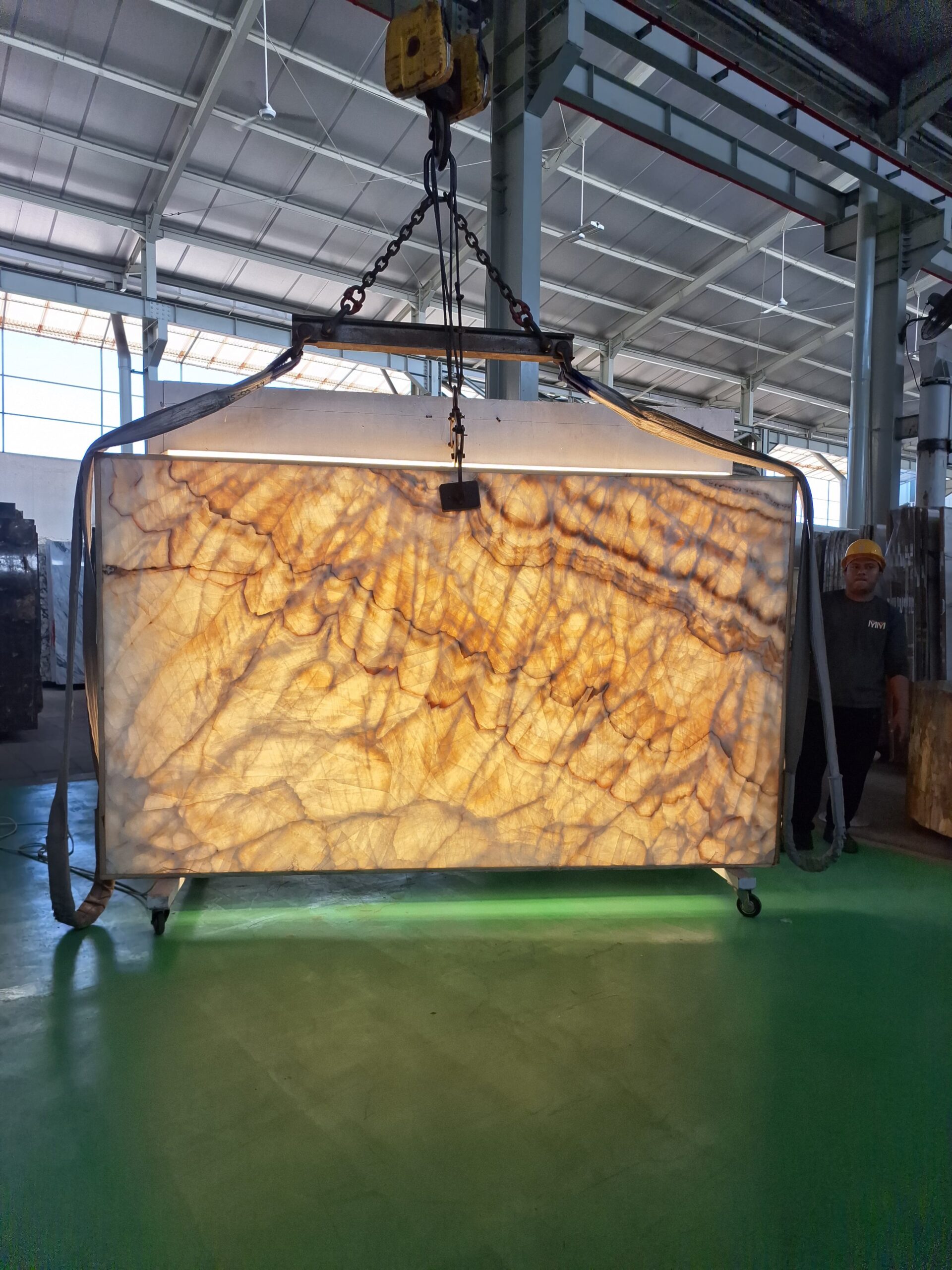 ">
">
What Is Onyx Stone? Discover Its Unique Character & Aesthetic Appeal
Onyx stone is one of the most premium types of natural stone, prized for its translucent appearance and captivating patterns. This stone belongs to the chalcedony or microcrystalline quartz family and features naturally layered colors formed over thousands of years.
Thanks to its exceptional aesthetic value, Onyx is widely used in the world of interior design and architecture.
Key Characteristics of Onyx Stone
Each slab of Onyx stone is a piece of natural art. Here are some of its unique features:
Transparency & Opacity
Onyx can be semi-translucent, transparent, or even opaque, it is not always fully transparent. This unique characteristic allows designers to explore various lighting effects, from bold backlit statements to elegant, solid surfaces. Its versatility makes Onyx an exceptional choice for diverse interior concepts.
Layered Patterns
Onyx showcases layered color patterns naturally formed over millennia. These patterns can appear as lines, waves, or unique natural shapes in each slab.
Wide Color Palette
Onyx comes in a variety of stunning shades: white, cream, green, red, brown, black, and gold. This gives incredible design flexibility.
Smooth Texture
The surface of Onyx feels extremely smooth and glossy when polished, adding an elegant touch to any space.
Fragility
Compared to marble or granite, Onyx is softer and more fragile. It requires extra care during handling and maintenance.
The Aesthetic Power of Onyx in Interior Design
Why do top interior designers and architects around the world love using Onyx? The answer lies in its unmatched aesthetic appeal.
1️⃣ Dramatic Backlit Effect
By adding lighting behind an Onyx panel, you can create glowing walls, tables, or bar counters that feel alive. This effect is perfect for:
- Five-star hotels
- Office lobbies
- VIP rooms
- Luxury homes
2️⃣ Stunning Focal Point
A single backlit Onyx panel can become the centerpiece of any room. Onyx is often used in:
- TV feature walls
- Bedroom headboards
- Partition panels
- Exclusive dining tables
3️⃣ Artistic & Natural Feel
No two slabs of Onyx are identical. The natural patterns add an artistic and personal touch to your space, making it feel unique and sophisticated.
Considerations: Potential Drawbacks of Onyx
While stunning, Onyx has some limitations to keep in mind:
- More Fragile → More prone to scratches or breakage compared to granite or marble.
- Special Care Needed → Requires proper sealing and regular maintenance to preserve its beauty.
- Higher Cost → Onyx tends to be more expensive due to its rarity and complex processing.
Tips for Choosing & Maintaining Onyx Stone
If you want to make the most of your investment in Onyx stone, follow these expert tips:
Choose High-Quality Onyx
✅ Select slabs with minimal natural cracks.
✅ Choose the right thickness depending on the application (thin Onyx works better for backlit walls).
✅ Ensure the color and pattern match your design concept.
Use Onyx in the Right Areas
Since Onyx is relatively fragile, it’s best used in low-traffic or high-visual-impact areas:
- Feature walls
- Accent tables
- Decorative panels
Avoid using Onyx on floors or main kitchen countertops.
Perform Regular Maintenance
✅ Apply high-quality sealers and protective coatings.
✅ Clean gently using soft cloths and stone-safe cleaners.
✅ Avoid exposure to acids or harsh chemicals.
Conclusion
Onyx stone is the perfect choice for those seeking premium aesthetics and natural character in their interior design. Its translucent appearance, unique layered patterns, and stunning backlit effects can dramatically transform any space into one that feels truly luxurious and sophisticated.
However, it’s important to remember that Onyx requires extra care and the right applications. When chosen carefully and maintained properly, Onyx stone becomes a timeless and breathtaking element in any interior.





